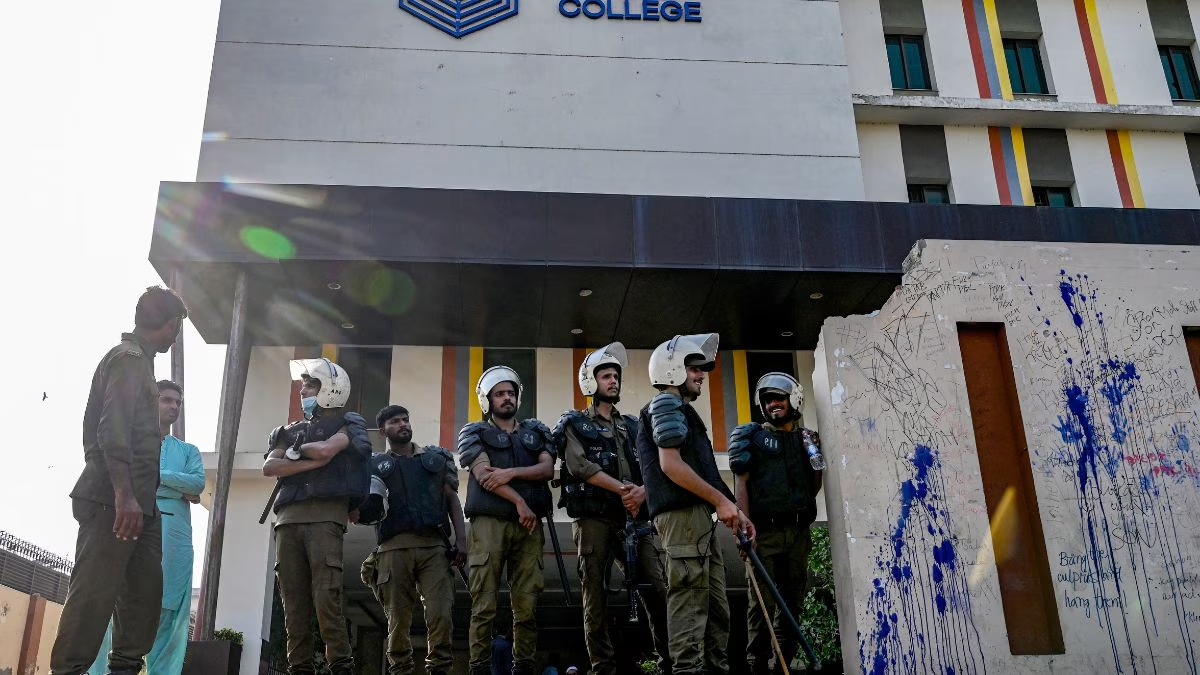Sindh Chief Minister Murad Ali Shah has issued a stark warning regarding the ongoing and potentially devastating rainfall across various regions of Sindh, including Karachi. The Chief Minister’s concerns come as heavy rains, driven by a monsoon system originating from India and Bangladesh, continue to batter the province, raising fears of severe flooding and widespread disruption.
The Ongoing Monsoon Deluge
Speaking to the media in Sajawal, Murad Ali Shah provided a detailed overview of the situation, highlighting the intensity of the current monsoon system. The weather system, which began impacting the region two days ago, has already brought heavy rainfall to several districts. Among the worst-hit areas is Tharparkar, where the heaviest rain has been recorded so far.
The Chief Minister emphasized that the situation remains precarious, with the potential for further rainfall posing significant risks. According to the Pakistan Meteorological Department (PMD), the monsoon system is expected to persist, with particularly heavy rain likely to affect Karachi today and tomorrow. This forecast has prompted authorities to maintain a high level of vigilance, especially in vulnerable areas.
Areas at Risk: A Broader Picture of the Threat
Murad Ali Shah’s briefing underscored the broad geographic spread of the threat. He identified several districts that are at heightened risk due to the ongoing rains and the possibility of flooding. These include:
- Tharparkar: Already experiencing heavy rainfall, Tharparkar remains under close observation due to its vulnerability to floods.
- Sajawal, Thatta, Umarkot, and Shaheed Benazirabad: These districts are also facing severe weather conditions, with the potential for significant damage if the rains continue unabated.
- Kirthar Range, Qamber Shahdadkot, Larkana, Jacobabad, Dadu, and Jamshoro: Located on the other side of the river, these districts are similarly at risk, particularly from flash floods and landslides triggered by the heavy rains.
In Karachi, the most populous city in Pakistan, the situation is also concerning. The city has already experienced localized flooding in several areas, and with more rain expected, the risk of widespread disruption is high. Chief Minister Shah noted that he has been actively monitoring the situation in Karachi, holding multiple meetings to coordinate the response and ensure that all necessary precautions are in place.
Government Response and Preparations
To manage the unfolding crisis, Murad Ali Shah announced that he has appointed focal persons from his cabinet to oversee operations in each of the affected districts. These officials are tasked with coordinating local response efforts, ensuring that resources are efficiently allocated, and addressing any emergent issues on the ground.
The Chief Minister also highlighted the importance of maintaining control over the flow of the Indus River, which is currently experiencing a rapid increase in water levels. The swift flow of the river presents a significant challenge, particularly for regions situated along its banks. Despite these challenges, Shah expressed confidence in the government’s ability to manage the situation, stating that while there are some complaints from Badin, the situation is generally under control.
The Situation in Karachi: A City on Edge
In Karachi, the risk of heavy rainfall and subsequent flooding remains a top concern. The city, which has struggled with drainage and infrastructure issues in the past, is particularly vulnerable to the kind of intense rainfall predicted by the PMD. The Chief Minister’s warning comes as a reminder of the city’s fragility in the face of natural disasters and the need for continued vigilance and preparedness.
Murad Ali Shah’s comments also reflect a broader understanding of the interconnectedness of weather systems and their impact on urban areas. With Karachi serving as the economic hub of Pakistan, any significant disruption caused by flooding could have far-reaching consequences for the country as a whole. This reality has driven the government to take proactive measures, including the deployment of emergency teams and the establishment of monitoring stations across the city.
Challenges and Concerns: Addressing the Immediate and Long-Term
While the immediate focus remains on managing the ongoing rains and mitigating the risk of flooding, the situation also raises broader questions about disaster preparedness and infrastructure resilience in Sindh. The challenges faced by districts such as Tharparkar, Sajawal, and Karachi highlight the need for long-term strategies to strengthen infrastructure, improve drainage systems, and enhance early warning mechanisms.
Moreover, the current crisis underscores the importance of community engagement and public awareness. As the government works to manage the situation, it is crucial that residents in affected areas are informed and prepared to take necessary precautions. This includes staying updated on weather forecasts, avoiding unnecessary travel, and being ready to evacuate if necessary.
A Call for Vigilance and Cooperation
As Sindh braces for continued rainfall and the possibility of severe flooding, Chief Minister Murad Ali Shah’s warnings serve as a critical reminder of the need for vigilance, preparedness, and cooperation. While the government is taking all possible measures to manage the situation, the success of these efforts will depend on the active participation and support of local communities. By working together, the people of Sindh can navigate this challenging period and emerge stronger in the face of adversity.



